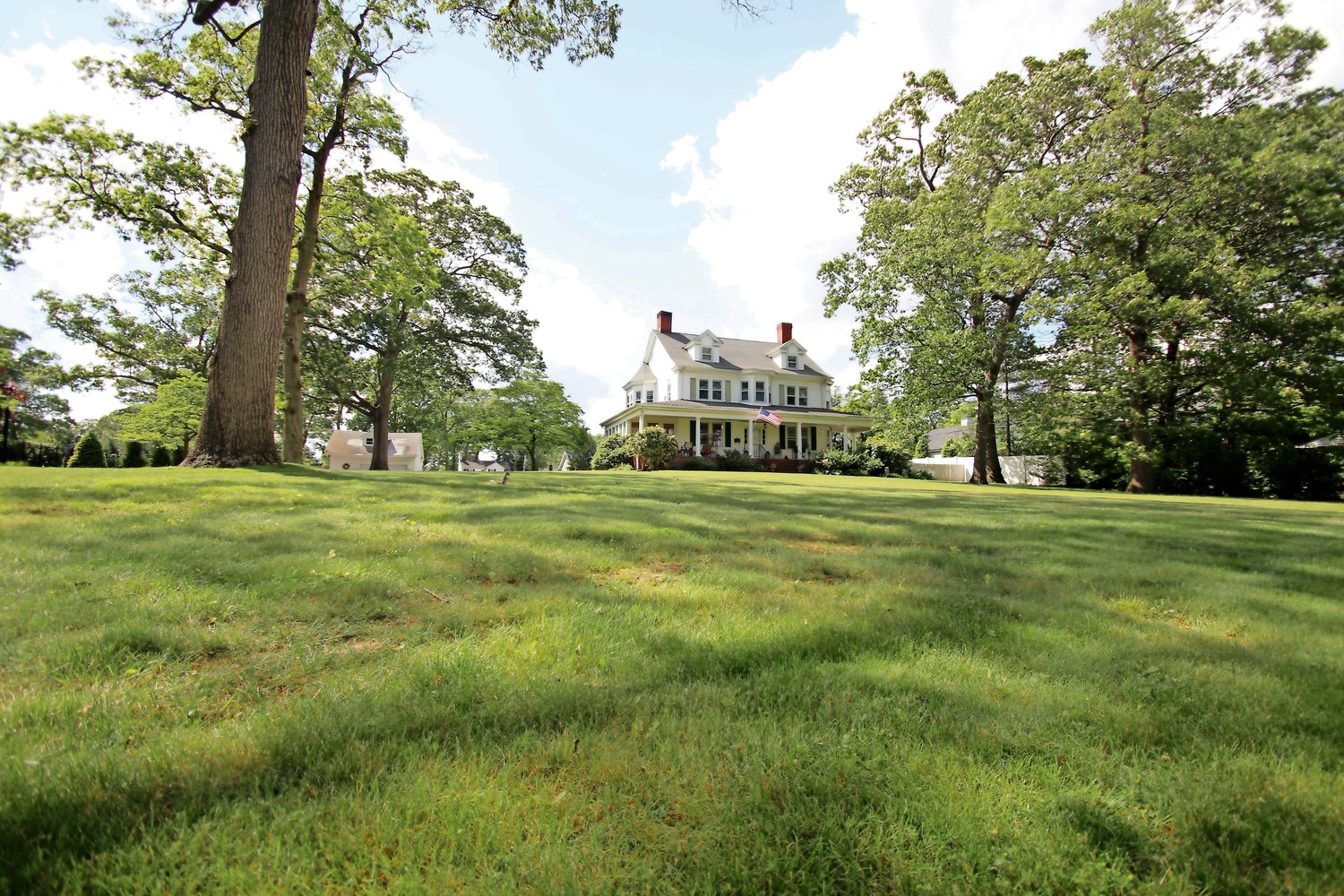Hempstead Avenue subdivision plan crawls forward after heated hearing
After retiring into executive session ‘to obtain legal advice,” the Rockville Centre Planning Board unanimously voted on Oct. 23 to close the hearing related specifically to the State Environmental Quality Review Act process for a proposed subdivision at 220 Hempstead Ave.
Hearings will continue as the application to demolish the site’s century-old home — formerly St. Mark’s United Methodist Church’s parsonage — and subdivide the property to fit six single-family homes will be voted on separately, noted Steven Leventhal, a Roslyn lawyer serving as counsel to the board for this case.
Under the act, referred to as SEQRA, the village was required to address a number of environmental impacts of the development before reaching a decision. The owners seeking to develop the property prepared and submitted an environmental assessment form, which covered a more comprehensive review of a range of potential effects the subdivision may have.
The village’s Board of Appeals has heard various subdivision plans for 220 Hempstead Ave. over the last two-plus years as opposition has stayed consistent among community members that feel the village is being overdeveloped and becoming “city-like.” It landed in front of the Planning Board for the first time in July. Residents urged the board last week to vote to require the applicants, Jim and Brett O’Reilly, to provide further information in an Environmental Impact Statement. The board chose instead to move along the process, as they now will consider the subdivision.
The Mayor’s Task Force on Historic Preservation was formed partly in response to the subdivision plan to save the property’s home. According to documents obtained by the Herald, the house at 220 Hempstead Avenue is eligible for listing on the State and National Registers of Historic Places. “Eligible is one thing and listed is another thing,” Robert Grover, who is acting as a consultant to the village, said at the meeting last week.
Jennifer Santos, chairwoman of the task force, noted a letter written to the board by Preservation Long Island, which detailed the history of the property’s home. In the early-1900s, the house was owned by Electa Gifford and Anna Millar, who were real estate developers known for their music careers who helped sell and develop properties on Hempstead Avenue, the letter states.
“Nothing in here will change my recommendation to the board,” Grover said in regards to concluding the SEQRA hearing process. “…This certainly does not elevate this application to one which would merit a full environmental impact statement. In fact, not even close.” He added that the board could further consider the letter when reviewing the subdivision application itself.
Christian Browne, an attorney representing the O’Reillys, noted that the home’s fate is not relevant to the board. “Your approval of this application is not going to destroy the house; you can’t save the house.” he told the board members. “If the applicant wishes to tear it down if this were to be denied, he could do that.” He added that the O’Reillys would be open to donating the home.
But residents pointed to other parts of the submitted environmental assessment form that they believed were incomplete or inaccurate, bringing up concerns about the project’s impact on traffic, drainage during rainstorms and construction time, which is estimated at two years. Grover said he consulted with traffic engineers, who determined six homes would not significantly impact traffic. The drainage system on the property would be improved to hold five inches of rainwater, he added, and Leventhal noted that the applicant would likely have to abide by specific building time frames set by the village if the subdivision was approved.
Resident Michael Mulhall challenged the expected selling price of the potential homes, which he said were unrealistic. He grew irritated when Thomas Gallucci, acting as the planning board’s chairman for this case, tried to cut him short.
‘You’re going to hear me out,” he said, raising his voice. “…I pay $31,000 a year in taxes. I’m asking for two minutes.” The audience of about 20 people broke out in applause.
“How can we let this go forward when there’s omissions, there are inaccuracies,” Mulhall added. “I’m surprised . . . that this board would take it so easily.”
Planning board members Matthew Didora and Andrew Cameron expressed pause at voting to close the SEQRA hearing but voted to do so upon returning from a private meeting.
The next hearing, which will hone in on the subdivision, is on Nov. 15 at 7:30 p.m. at the John A. Anderson Recreation Center. Browne reminded the board that approval of the project would allow additional engineering plans to move forward. “I would just impress upon you, particularly at the request of my client,” he said, “that you expeditiously make a decision one way or the other.”

 44.0°,
Mostly Cloudy
44.0°,
Mostly Cloudy 




